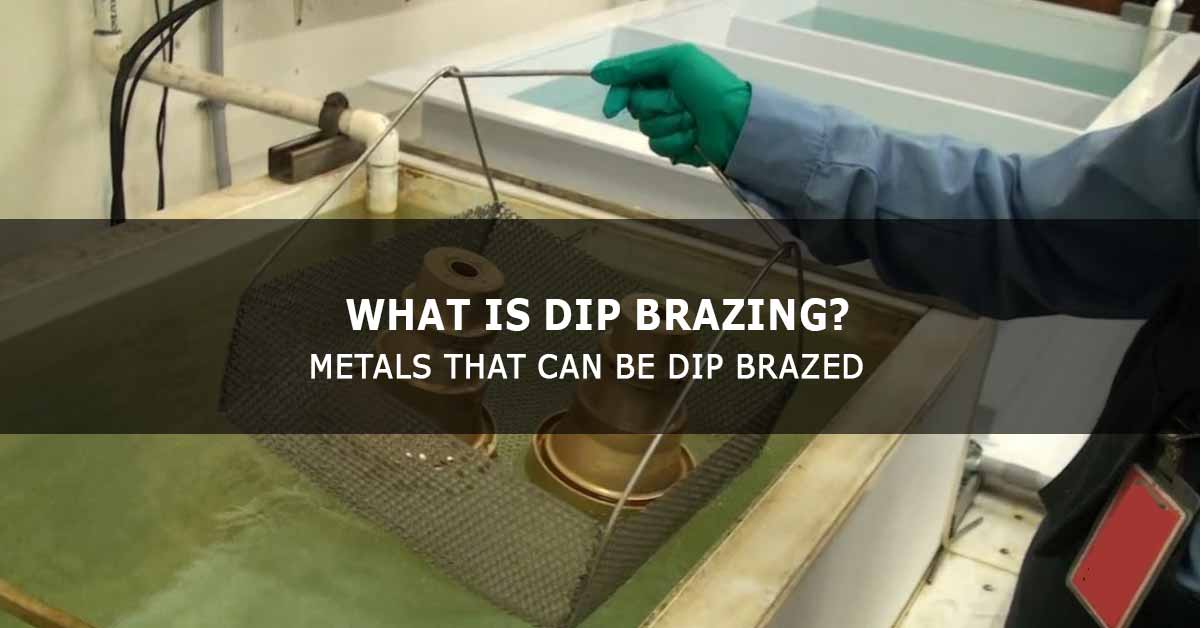Dip brazing stands out from other brazing methods, and the advantage of dip brazing is that you can braze and join multiple base metals simultaneously.
This article answers questions like dip brazing and how it is done and metals joining with dip brazing.
What is dip brazing, and how is it done?
Dip brazing is a brazing process that allows simultaneous brazing or joining of two or more base metals and uses flux and the filler metal. When the brazing assembly is dipped in the hot salt bath, the flux melts and dissolves in the salt bath and allows the filler metal to melt and fill the joint by capillary action.
Dip brazing needs well-controlled conditions. The dip brazing process is suitable for small and detailed brazing assemblies (an assembly is made by joining different parts or pieces). Dip brazing facilitates the joining or brazing of several parts or pieces in the desired manner simultaneously. You can achieve brazing of even the small and hard-to-reach joints of an assembly by adopting a dip brazing process.
The dip brazing system consists of:
- A heat-resistant immersion tank (sufficient for the assemblies to be brazed) for preparing a bath of molten salt.
- An air furnace to cool the hot brazed assemblies after taking them out of the salt bath.
- A quenching medium, facility to clean the traces of flux after brazing, etc.
Steps to perform dip brazing
Step 1: The parts to be brazed are thoroughly cleaned and assembled in the fixture by taking care of the recommended joint clearances.
Step 2: Flux is applied on the joint, and preformed filler metal is placed in position. The filler metal should be in contact with the parts to be joined.
Step 3: The brazing assembly is preheated to a temperature less than the melting temperature of the flux and filler metal. Preheating helps fast dip brazing.
Step 4: Dip the brazing assembly into the salt bath. The flux melts and gets dissolved in the salt bath. The filler metal melts and fills the joint due to capillary action. There is no worry of oxide formation since neither the base metal nor the molten filler metal comes in contact with air. All the joints are simultaneously bonded by brazing. The time taken for the dip brazing can be 30 seconds to 180 seconds, depending on the brazing assembly.
Step 5: Take out the brazed assembly from the salt bath, cool it in the air slightly, and then quench.
Step 6: Clean the brazed assembly to remove the traces of flux.
Example:
Aluminum is dip brazed with a combination of aluminum and silicon (88% aluminum and 12% silicon) as the filler metal. The preheating of the brazing assembly is done at around 550º C (1022º F) and dip brazing at around 590º C (1094º F).
Dip brazing allows you to braze more than one joint simultaneously, and it also brazes the joints that are not accessible for brazing methods like torch brazing. Dip brazing joins multiple parts with varying material thicknesses.
Dip brazing is an economical method of brazing multiple joint brazed parts, and large size dip brazing salt baths can help to dip braze a batch of brazing assemblies together. Tools cost is considerably low for dip brazing.
What metals can be dip brazed?
Aluminum is very well suited for dip brazing and gives good quality results. The Dip brazing process can also be used for steel, copper, brass, and bronze, and the filler metal can be an alloy of copper, phosphorous, and silver. The metal alloy should be able to withstand up to 1100º F (593º C).
Using a bad thermal conductor metal for the brazing fixture (like Inconel, stainless steel, etc.) is good.
Dip brazing and aluminum are a good pair. The aluminum antennas seen on roof-tops or at a facility of high technology communication are complicated and of high precision, and they are made from the dip brazing process.
Aluminum dip brazing has applications like antennas, aircraft parts, chassis, etc. Aluminum dip brazed parts are sturdy and leakproof, and the joints have good conductivity.
Related Article: Types Of Torch Brazing – How To Braze Metals With A Torch?
Conclusion
Dip brazing is a specialized form of brazing and has applications in the medical, aerospace industry, military-related industries, etc. Hopefully, you have received some insight about dip brazing through this article.
References:







